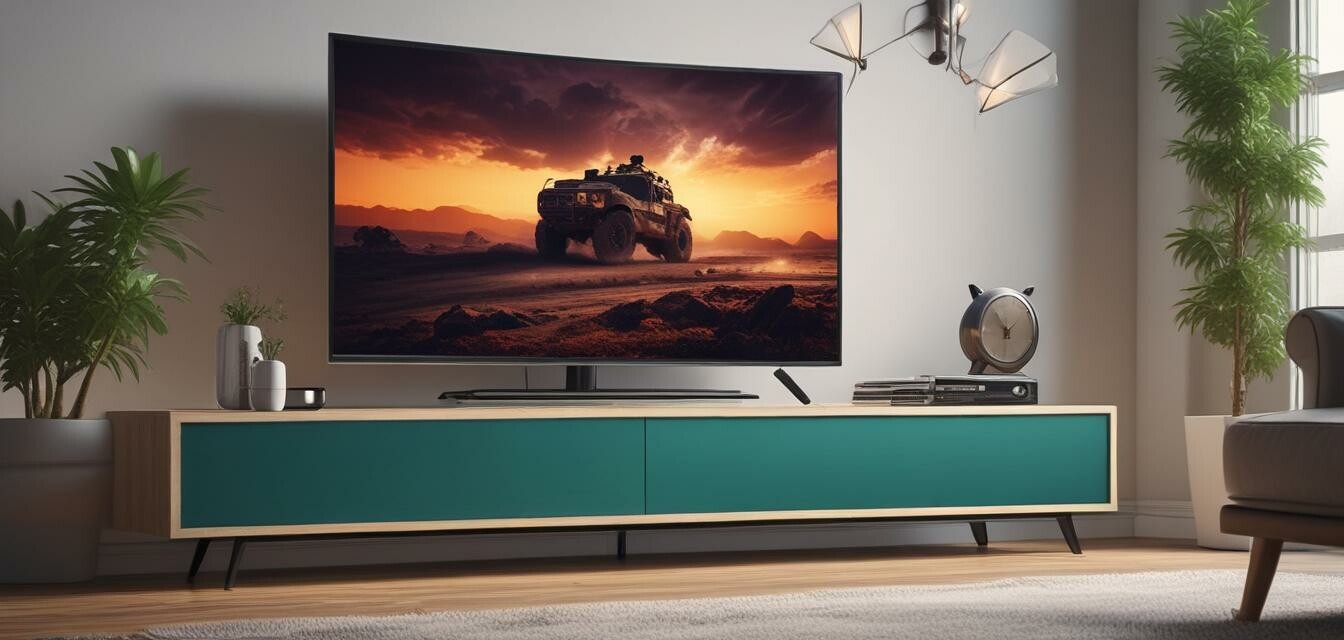
How to Choose the Right Refresh Rate for Gaming TVs
Key takeaways
- The refresh rate indicates how many times per second the image on the screen is refreshed.
- Common refresh rates are 60Hz, 120Hz, and 240Hz, each impacting the gaming experience differently.
- Higher refresh rates are preferable for fast-paced gaming, especially in competitive scenarios.
- Consider the console or PC capability when selecting a TV to ensure compatibility.
- Input lag and response time are also critical factors to consider alongside refresh rates.
When it comes to gaming, every detail counts, and the refresh rate of your gaming TV is no exception. It plays a crucial role in the fluidity of gameplay, making it imperative to understand how to choose the right one for your gaming needs. This guide will walk you through the intricacies of refresh rates and help you select the optimal setting for your console.
Understanding Refresh Rates
The refresh rate is simply the number of times your TV refreshes the image per second, measured in Hertz (Hz). In gaming, a higher refresh rate translates to smoother visuals and more responsive gameplay. Here’s a breakdown of the most common refresh rates:
| Refresh Rate | Description | Best For |
|---|---|---|
| 60Hz | Standard refresh rate, suitable for casual gaming. | Single-player games, movies. |
| 120Hz | Provides a more responsive and smoother visual experience. | Fast-paced games, competitive gaming. |
| 240Hz | Designed for the most demanding gaming scenarios. | Competitive eSports, high-frame-rate gaming. |
Why Does Refresh Rate Matter for Gaming?
Refresh rates directly impact how smooth and fluid the game feels. A higher refresh rate can reduce motion blur, leading to better visibility and precision, particularly in fast-action scenes. Let’s delve into a few reasons why refresh rate is critically important:
- Smoother Motion: A higher refresh rate reduces choppy visuals, allowing for better tracking of fast-moving objects.
- Enhanced Competitive Advantage: In competitive gaming, faster response times can make a significant difference in performance.
- Increased Immersion: With clearer images and smooth transitions, players can become more immersed in the gaming experience.
Choosing the Right Refresh Rate for Your Gaming Setup
To choose the right refresh rate for your gaming TV, consider the following factors:
1. Your Gaming Console or PC Capabilities
Ensure that your gaming console or PC can output the desired refresh rate. Not all consoles support higher refresh rates. For instance, 4K gaming TVs can often handle 120Hz refresh rates with appropriate consoles.
2. Types of Games You Play
Consider what type of games you frequently play. Different genres may benefit from different refresh rates:
- Casual Games: 60Hz may be sufficient.
- Action and Shooter Games: 120Hz is often recommended for enhanced gameplay.
- eSports & Fast-Paced Games: 240Hz can provide a competitive edge.
3. Input Lag and Response Time
In addition to refresh rates, look at the input lag and response time of your gaming TV:
| Input Lag | Response Time |
|---|---|
| Time taken for your TV to process the input from the controller. | Time taken for a pixel to change from one color to another. |
Setting Up for Performance
Once you've chosen your gaming TV, proper setup is crucial for an optimal gaming experience. Here are some tips:
Tips for Beginners
- Check the Game Mode: Most gaming TVs offer a dedicated game mode which reduces input lag.
- Adjust Settings: Fine-tune graphic settings on your console for the best performance.
- Use Quality Cables: Upgrade to HDMI 2.1 cables to support higher refresh rates.
Common Myths About Refresh Rates
There are many misconceptions surrounding refresh rates. Here are a few debunked:
- Higher refresh rates cause eye strain: This is a myth; higher refresh rates can actually make viewing more comfortable.
- 120Hz is double 60Hz: While the numbers indicate twice the refresh rate, the difference in experience is subjective.
Conclusion
Understanding the importance of refresh rates is vital for any gamer looking to enhance their experience. Whether you’re indulging in cinematic single-player adventures or engaged in fast-paced multiplayer battles, the right refresh rate can profoundly impact your gameplay. Always consider your gaming setup and what type of games you enjoy most to choose wisely.
Pros
- Smoother gameplay enhances immersion.
- Gives a competitive edge in fast-paced games.
- Improves visibility in action games.
Cons
- Higher refresh rate TVs can be more expensive.
- Not all consoles utilize higher refresh rates effectively.
For a deeper understanding of buying a TV for your console, visit our page on Buying Guides. For those looking for specific models, explore our selections of HDR Gaming TVs, OLED Gaming TVs, and QLED Gaming TVs.
